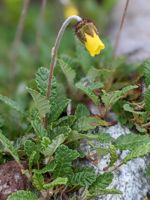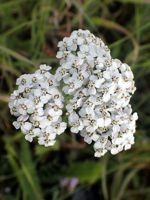Mon-Fri 9am - 5pm Mountain time
Yarrow vs Yellow Mountain Avens
Dryas drummondii
Achillea borealis (Previously Achillea millefolium)
CUSTOM GROW
SOLD OUT
Yellow Mountain Avens is a native perennial wildflower with bright yellow buttercup-like blooms. The nectar-rich flowers attract a variety of pollinators, including bees and butterflies. By thriving at higher elevations, it helps sustain pollinator populations and provides one of the earliest sources of nectar and pollen in alpine habitats. After the blooms fade, the plant produces silky seed heads that begin as upright, compact tufts and gradually expand into rounded, fluffy clusters, adding texture and interest to the landscape.
As a nitrogen-fixing plant, Yellow Mountain Avens enriches soil fertility and supports the growth of surrounding vegetation. It forms dense, spreading mats of evergreen foliage that act as a groundcover and help stabilize soil. Often among the first species to establish in disturbed alpine sites such as glacial outwash or landslides, it is well-suited for alpine revegetation, erosion control, naturalization, and ecological restoration projects in harsh, rocky environments.
Yarrow is a herbaceous, native wildflower that is found across Canada. It features large, flat clusters of tiny white flowers. The blooms attract a variety of pollinators, making it an ideal choice for pollinator gardens. While partial shade is tolerated, the best flowering occurs in full sun. Yarrow is resistant to deer and rabbits, making it both a beautiful and practical addition to your landscape.
The entire plant is edible, but leaves and flowers are most commonly consumed. They have a strong licorice scent and a mild sweet flavor that is similar to tarragon. Yarrow leaves can also be used as a natural insect repellent.
It is important to plant Yarrow in the right place, it can spread quickly via both rhizomes and self-seeding. Deadheading the spent flowers will extend the bloom season and can help limit self-seeding.
Yellow Mountain Avens Quick Facts
Yarrow Quick Facts
Toxicity: toxic to dogs, cats, and horses

